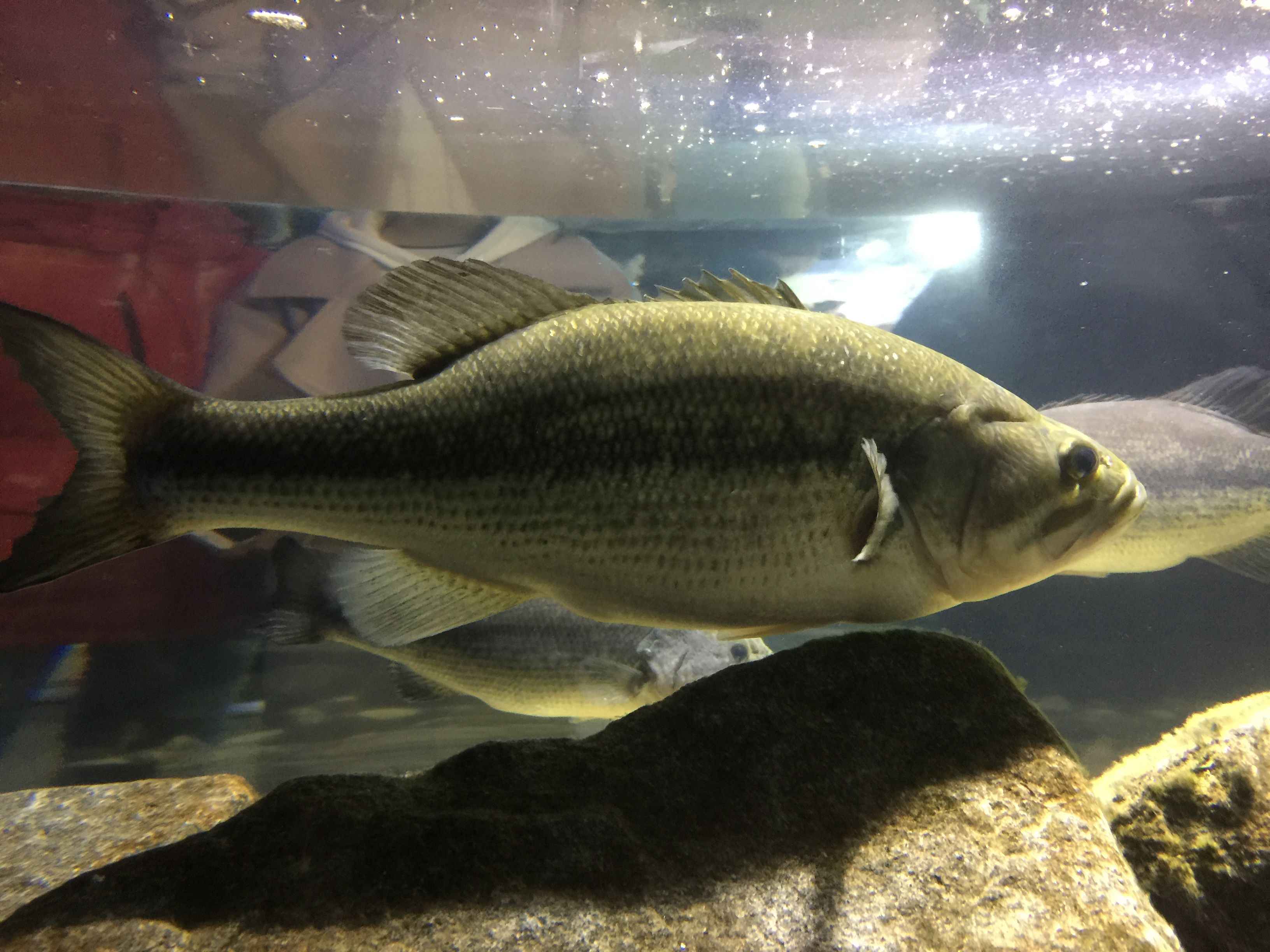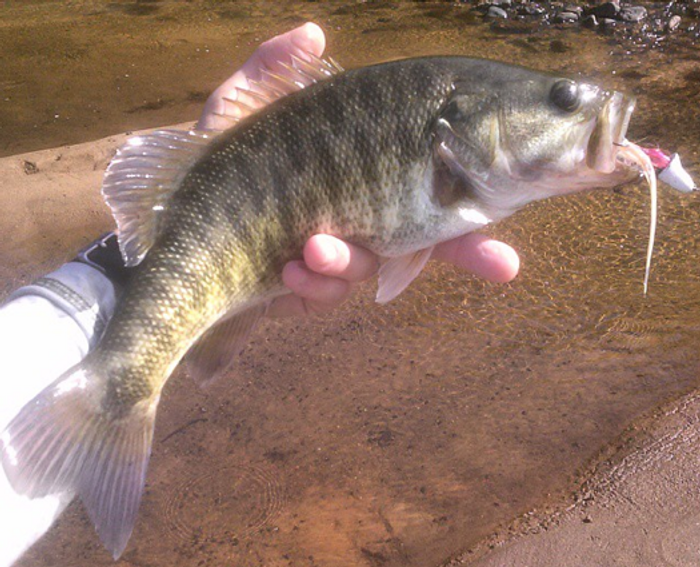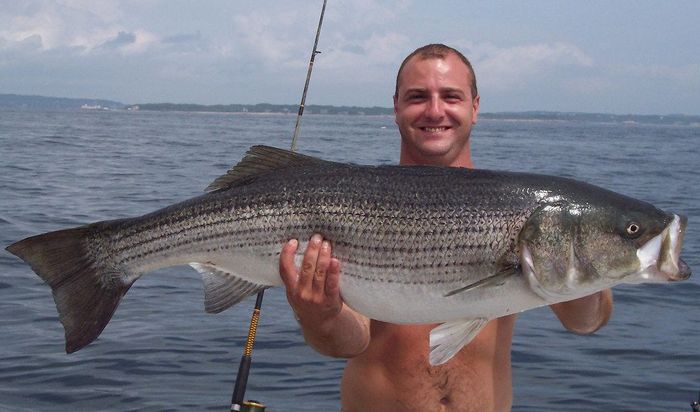Identify Your Type of Bass - Species Identification
Take a look at the family of the black bass and the temperate bass (or true bass) and break down how to identify each species.

When you hear a fish called “bass”, your first instinct is to think of the popular game fish. Bass indeed is one of the sought-after sport fish in the world known for putting up a fight when getting hooked. However, the name “bass” is extremely popular with fish names, partly to increase its marketability for consumption, but this can often leave the angler and the regular person confused.
It isn’t easy to round up all the types of bass in the world, so this article has focused on the most popular species that can be found in North America, where it is widely distributed. Bass are known to inhabit common waters and even crossbreed, resulting in unrecognized hybrids that look similar and are difficult to identify distinctly.
In this article, we examine the family of the black bass and the temperate bass (or true bass) and break down how to identify each species.

Species Identification of Bass
Black Bass (Genus Micropterus)
The black bass is actually a sunfish that is the most popular type of bass spread throughout North America. It's known as an aggressive pound-for-pound game fish, making it a popular catch for anglers, leading to its introduction in non-native waters worldwide.
Largemouth Bass (M. salmoides)
One of the earliest recorded black bass and the largest of its genus, the largemouth bass averages at 18 inches but can reach lengths of up to 29.5 inches and weigh 25 pounds. It favors lakes and rivers with slower currents that have clear waters and soft bottoms. Aptly named the largemouth, it has a big, sloping mouth with an upper jaw that extends past its golden brown eye. Its most identifying characteristic is its dorsal fin with 9-11 spines and 12-14 soft rays that have a deep notch making them appear distinctly separate from each other.
It has a dark green or olive body with a pale or yellowish underbelly, but its colors can vary depending on turbidity, appearing faded or silver in murkier waters. It has dark mid-lateral markings that form a jagged band, starting from its gill covers and gradually becoming a solid line as it nears the tail. The mature largemouth that lives in muddy lakes is often dark olive-brown or black, so its markings are less pronounced. During spawning, the males will be a darker shade than the females.
The largemouth has two official subspecies, which are the Northern largemouth (M. salmoides salmoides) and the Florida largemouth (M. salmoides floridanus). The latter is often disputed as a separate species of black bass but is not officially recognized as distinct.
Smallmouth bass (M. dolomieu)
The smallmouth bass has an upper jaw that reaches until the center of its eye but not past it. It’s smaller in size compared to the largemouth, usually reaching up to 10 pounds. The body is usually brown or bronze with 8 to 16 dark brown mottled vertical stripes that stretch from the upper half of its body toward the underbelly. Its color will vary depending on the turbidity of the water and its diet.

Generally, the river smallmouth is darker in hue and will have more elongated bodies. Lake-dwelling populations, on the other hand, are yellow-brown and rounder in shape. This fish may appear black, green, and in some instances distinctly yellow. The dorsal fins are joined and do not have a distinct notch or separation between them. The smallmouth favors colder waters and stronger currents but may share the same waters as the largemouth, although one species will be more dominant.
The smallmouth bass has two acknowledged subspecies, the Northern smallmouth bass (M. dolomieui ) and the Neosho smallmouth bass (M. dolomieui velox).
Spotted bass (M. punctulatus)
The spotted bass is almost the same in appearance and color as the largemouth, with a slightly more rounded body. It has similar dark, jagged mid-lateral markings that form together in a solid band towards the caudal fin and a shallow notch between its dorsal fins that make it appear separated. However, its upper jaw doesn’t reach past its eye, and it has formed ventrolateral stripes that appear as spots or dots running horizontally across its body. It prefers cool waters with rocky bottoms such as mountain streams and reservoirs.
There are three scientifically acknowledged subspecies of the spotted bass, which are the northern spotted bass (M. punctulatus punctulatus), Wichita spotted bass (M. punctulatus wichitae), and Alabama spotted bass (M. punctulatus henshalli). The Alabama bass is often a source of debate on whether it’s officially its own species and is only differentiated by dissimilarities in the number of scales on the lateral line or through DNA.
Guadalupe bass (M. treculii)
The Guadalupe bass is endemic to Texas and is the official state fish, mostly found in the northern and eastern waters of the Edwards Plateau and the Guadalupe River. Creeks, small streams, and waters with fast currents are its preferred habitat, and it has been introduced to the Nueces River. It’s similar in appearance to the smallmouth but doesn’t grow as large, averaging around 3 pounds. The coloration of its body extends further down compared to its relatives. The Guadalupe bass has dark lateral stripes, a shallow notch between its dorsal fins, an upper jaw that does not go past its eye, and a tooth patch on its tongue as well. It’s a rare and endangered fish mostly due to hybridization with the smallmouth and is under a catch-and-release status.
Redeye bass (M. coosae)
The redeye bass is found in the Coosa River in Alabama and has been divided into five subspecies. Similar to other black bass, its upper jaw extends to the eye, which is often red. Its body color ranges from olive to dark brown and may have red and white coloration on its fins and tails. Males will have a light blue color when spawning. Juveniles have tails with white fringes and will have 10 to 12 dark markings that do not connect to form a distinct lateral stripe that fades as they mature. The dorsal fin has a slight notch between, and the redeye bass has a small tooth patch on the tongue.

Shoal bass (M. cataractae)
The shoal bass was originally redeye bass but was officially recognized as a distinct species in 1999. What makes it different from the redeye is that it doesn’t have any red shades or white edges on its fins or tail and has a recognizable dark spot at the border of the gill cover and caudal peduncle. Like its relatives, its upper jaw does not go past its eye, and it has a shallow notch between the spin and soft dorsal fin. The shoal bass has an olive green to black body with dark markings that fade as it matures and has 72 to 77 lateral line scales. It has three diagonal black lines on its head, similar to smallmouth bass.
Suwannee bass (M. notius)
The Suwannee bass was recognized as its own species in 2008 and descended from the spotted bass. The upper jaw will reach up to the center of its eye but will not go past it. It’s rarely known to exceed more than 16 inches in length. During spawning, it will have blue colorations on its body. Its brown body typically has 12 olive green markings or blotches that begin with wide spaces between them near the head. It will get closer until eventually joining together to form a splotched band near the caudal peduncle. The Suwannee juvenile has a dark blotch at the base of its tail with white edges and pronounced mottling on the dorsal soft rays, which wane as it ages. This black bass is found in the Suwannee and Ochlockonee Rivers in Florida but has been introduced in St. Marks and Wacissa Rivers. It favors shallow portions of rivers with fast currents and limestone.
Choctaw bass (M. haiaka)
The newest addition to the growing list of black bass is the choctaw, which was uncovered in 2007 in Florida. Its native range includes the eastern Gulf coastal rivers, stretching out to Alabama. It can be found in the Yellow, Blackwater, Choctawhatchee, Escambia, and Perdido rivers. The Choctaw prefers calm, stagnant rivers or streams near the coast. It’s so similar to other species that the only method for visually identifying it is by counting its scales in specific parts of the body. For complete verification, genetic testing must be done.
Temperate Bass (Genus Morone)
Temperate bass is better known as true bass or sea bass and is not related to black bass. Instead, their closest relatives are the European seabass and spotted sea bass.

Striped bass (M. saxatilis)
The striped bass is the largest among the true bass and is one of the most popular game fish in the United States. It’s known for its seven to eight uninterrupted horizontal stripes that stretch from its gills to the caudal fin. The upper half of its body is often pale green, olive, blue, black, or brown, and its underside is white or silver. Its dorsal fin has a clear distinction between the spiny and soft rays. It has two tooth patches in the rear of its tongue and two sharp edges on its gill covers. It’s anadromous, living out most of its life in the ocean and migrating to spawn in freshwater. The striped bass’ native range is the Atlantic coast of North America.
Striped bass is known to produce a hybrid with a white bass called a hybrid striped bass. Among anglers, they are known as a wiper or whiterock bass. What makes it distinct is that its stripes are offset or interrupted, similar to a yellow bass. This hybrid is usually raised in aquaculture and often marketed in restaurants as wild striped bass.
White bass (M. chrysops)
The white bass is not generally a sought-after game fish, as it’s timider and doesn't put up a fight. It lives in clear, fresh water at least 10 feet in depth, such as lakes and reservoirs. Its deep body is generally silver-white with shades of light green, a dark back, and a white underbelly. It has slim continuous dark stripes running along its upper half that may be broken or dotted towards the underbelly. The white bass is smaller than the striped bass, with an average length of 10 to 12 inches. It contrasts with the striped bass in that it has one tooth patch in the rear of its tongue and one sharp edge on its gill covers. The white bass is widespread through the Midwest United States and is known to be plentiful in Lake Erie and Pennsylvania.
White Perch (M. americana)
The white perch is typically silver-white but may have darker colors on its upper half, such as olive green or black-green. These variations of shades have led to its nickname, the “black back”. Juveniles have dark lateral stripes that fade and become indistinct as they mature. Its body roundly angles upward just before its two dorsal fins separated by a small notch, with 9 spines and 12 soft rays.
The white perch’s native range is the Atlantic Coast of North America, from the St. Lawrence River to Pee Dee River in South Carolina. It can be found scattered around the northeastern part of North America, such as Chesapeake Bay, Nova Scotia, Lake Ontario, the lower Great Lakes, and the Hudson River. It generally favors brackish waters.
Yellow bass (Morone mississippiensis)
The yellow bass has a compressed body with five to seven dark stripes running horizontally along its sides. The stripes will be “broken” or offset above the anal fin as it nears the caudal fin. It has a silver body and underbelly with a yellow tinge, and its back is dark green. It’s not a popular game fish, usually caught as bycatch by anglers. It can be found in the Mississippi River, Trinity River, and Tennessee River. It prefers areas with heavy vegetation and clear waters.
Bass It Up: Conclusion
This list sums up the popular types of bass in North America. There are numerous other bass out there and bass that are not bass but have the word in its name. It’s no wonder that people often get confused about the different kinds of bass. We hope this list has helped clear up some of the common mistakes made in identifying bass in North America.




